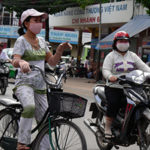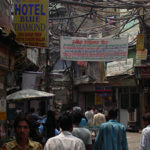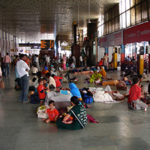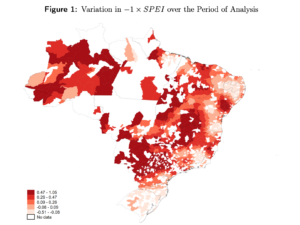
Long-term effects of weather-induced migration on urban labor and housing markets
with Matias Busso
Journal of Urban Economics, 2025
This paper explores the effects of weather-induced rural-urban migration on labor and housing market outcomes of urban residents in Brazil. In order to identify causal effects, it uses weather shocks to the rural municipalities of origin of migrants. We show that larger migration shocks led to an increase in employment growth and a reduction in wage growth of 4 and 5 percent, respectively. The increased migration flows also affected the housing market in destination cities. On average, it led to 4 percent faster growth of the housing stock, accompanied by 6 percent faster growth in housing rents. These effects vary sharply by housing quality. We find a substantial positive effect on the growth rates of the most penurious housing units (with no effect on rents) and a negative effect on the growth of housing units in the next quality tier (with a positive effect on rents). This suggests that rural immigration growth slowed down housing-quality upgrading in destination cities.
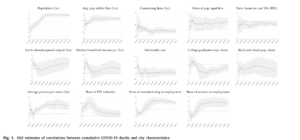
Why did COVID-19 affect some cities more than others? Insights from Brazil before vaccination
Regional Science Policy and Practice, 2024
This paper examines the local impact of COVID-19 in 2,500 cities in Brazil, contrasting findings with existing international estimates. It shows that pre-pandemic city characteristics have time-varying correlations with COVID-19 deaths per capita in Brazil and that the evolution of these correlations can differ significantly from other countries. Some patterns, such as the association between population density and mortality, are consistent across international experiences. However, in contrast to the U.S. but consistent with studies in China, Italy, and other European countries, the pandemic in Brazil took a greater toll on cities with higher income levels. This is consistent with the fact that higher incomes correlate with greater mobility in Brazil. Other city characteristics, such as the presence of slums and high residential crowding, also correlate with higher death rates per capita in Brazil. Nonetheless, these vulnerabilities do not appear to be driven by mobility differences, as people in cities with these characteristics had a greater propensity to stay home.
Recent Working Papers
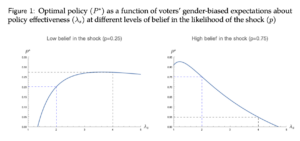
Gender and electoral incentives: Evidence from crisis response
with Clemence Tricaud
Revise and Resubmit, Review of Economics and Statistics
This paper provides new evidence on why men and women leaders make different choices. We first use a simple political agency model to illustrate how voters’ gender bias can lead reelection-seeking female politicians to undertake different policies. We then test the model’s predictions by exploring leaders’ responses to COVID-19. Assuming that voters expect policies to be less effective if decided by women, the model predicts that female politicians undertake less containment effort than male politicians when voters perceive the threat as low, while the opposite is true when voters perceive it as serious. Exploiting Brazilian close elections, we find that, early in the pandemic, female mayors were less likely to close non-essential businesses and female-led municipalities experienced more deaths per capita, while the reverse was true later on, once the health consequences materialized. These results are exclusively driven by mayors facing reelection and stronger in municipalities with greater gender discrimination.
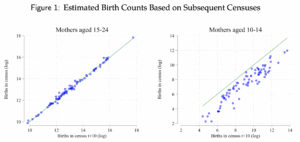
The undercounting of child-mother births
with Rafael Rubião and Miguel Angel Talamas Marcos
Accurate demographic data is vital for policy, yet private costs can deter truthful reporting of sensitive information. We examine this market failure in the context of child motherhood using administrative records from Brazil, Mexico, and the United States, as well as census data from 59 countries. Our analysis uncovers systematic under-reporting. Births to mothers aged 10–14 are frequently missing from administrative records but appear in censuses conducted a decade later, with under-counting reaching 20–30\% in the studied countries, implying that retrospective census estimates provide more accurate birth counts than administrative records for child mothers but not for older mothers. We introduce a model where reporting decisions balance instrumental benefits against age-dependent private costs. This framework predicts that under-reporting declines with both the mother’s age at childbirth and the time elapsed between data collection and childbirth— two patterns confirmed by our data. Finally, our findings suggest that social costs are a primary driver of under-reporting child-motherhood.
Book

Rethinking Urban Migration: Policy Options for Cities in Latin American and the Caribbean
with Matias Busso and Paul E. Carrillo. Book available in English, Spanish, and Portuguese. Inter-American Development Bank, Washington, D.C., 2023.
The potential challenges associated with migration to cities have justifiably received much attention. But they may obscure the significant opportunities that migration also offers for receiving communities seeking to boost economic development. This report is an invitation to rethink urban migration, paying due attention to the opportunities for local economies that emerge with the arrival of both internal and international migrants and encouraging policymakers to capitalize on them. By tailoring policies to specific contexts and bridging short-term constraints with long-term solutions, cities can leverage the skills and diversity migrants bring, fostering innovation, productivity growth, and prosperity for all. The pages of this report offer guidance on how to go about this task.
Recent Blog Posts
How Do Latin American Urban Migrants Fare in their Destination Cities?
on October 2, 2024
Urban migration is a powerful force in the economic landscape of Latin America and the Caribbean. As we highlight in “Rethinking Urban Migration,” urban migrants play an important role in the economic vitality of the cities they move to, contributing productive labor, creating jobs, paying taxes, and stimulating local economic growth. For that reason, understanding how […]
Easing Housing Constraints to Urban Migration
on May 23, 2024
For six decades, migrants have been pouring into the cities of Latin America and the Caribbean, boosting the percentage of the urban population from 50% to 80%, and delivering large benefits, including greater specialization, competition, innovation and entrepreneurship, to the region’s metropolitan centers. But while migration to cities often results in significant gains, […]

